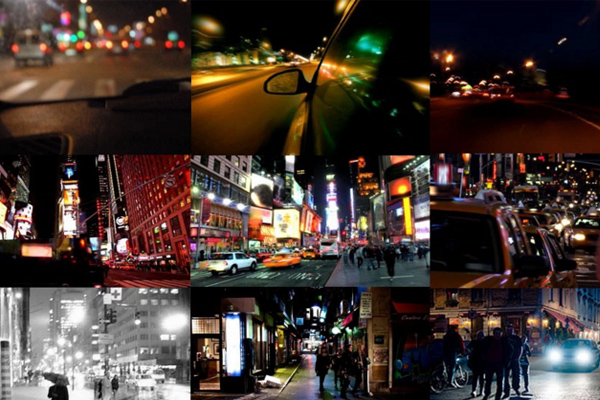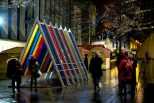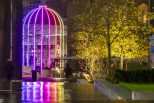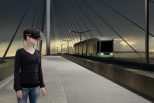"Forest of Light" installation that explores the idea of interaction and perspective; the darkened space is lit by towering…

To understand what people think about urban lighting, Daria Casciani – a Phd student of the INDACO Department at Milan’s Polytechnic University – developed Else, an experimental survey on urban lighting. She explains to Alchimag the concepts and purpose of this research.
Where did the idea for this research stem from?
The research deals with a sector that is changing rapidly for a series of technological innovations, Energy issues and, above all, social and cultural changes offer great design potential without neglecting the need for quality. Because light is primarily intended for people, a lighting project should to be based on social and behavioural aspects and must meet the needs of the inhabitants of a given space, balancing energy, functional and economic aspects.
What is the focus of your research?
This research, while taking into account the technological revolution, which is affecting light sources and changing lighting design parameters, light planning modalities, as well as the professionals involved and the skills required, also focuses on the man-light-environment relationship and is aimed at defining new sustainable lighting systems in urban settings, in both theoretical and practical terms.
What are the results so far? What has emerged from this preliminary stage?
ELSE is a first experiment of virtual ethnography, a social survey with the objective to reach the highest number of people possible and collect information on the social and experiential impact of lighting in the cities.
Both the topic and the method used for the survey have attracted considerable interest and participation especially at the national level: partial survey results conducted on over 150 recipients show a general interest for the social and cultural value of lighting in cities. There is a growing need for interaction, participation and socialisation through a lighting system that should not be only functional: light should be less structurally organised but relevant enough to “customise” the city and make it more compatible with human beings using energy-efficient systems.
This means that there is the need for more sustainable lighting fixtures designed “on a human scale”. Some of the preliminary results of ELSE will be published soon at http://dariacasciani.wordpress.com
When is the deadline to complete the survey? How will data be processed?
ELSE will be available for the time necessary to collect as many answers as possible, and answers will be processed as they are entered: the objective is to extend the study beyond national borders because we welcome as many interpretations, assessments and preferences as possible.
Cases will be examined individually and compared against each other, analysing the average results as well as the most interesting answers. The analysis will take into account the different characteristics of the population, because the numerous answers regarding how light is perceived vary depending on the contexts, culture, and age of recipients.
Lastly, the study intends to explore scientifically all significant light attributes in order to generate a set of guidelines and functional criteria for an urban lighting design, which is more compatible with human beings.
What are the next steps for this experimental project?
The study will continue with an insight regarding the ELSE results, in order to better investigate some particularly significant and interesting aspects. Moreover, we are planning a second phase regarding the lighting in night-time urban spaces: we will set up Lightwalks in the city of Milan to investigate the perception of light. We will be measuring, shooting pictures, observing and interviewing people. This analysis of people’s night-time urban lighting experience will be used to build guidelines or design criteria or to create social urban lighting initiatives where we will invite citizens to take part in the development of sustainable lighting for their neighbourhoods: Light Experience.
What do you believe is the best public lighting? What is needed?
We need to bring back darkness, an endangered natural resource in urban settings, we need to re-conquer the narrative richness of light, abandoning the idea of an individual lighting pole, and allow light to pervade buildings’ walls, roofs, sidewalks and along roads in micro and macro light elements. We should overcome the conventional relationship between the temporary and permanent, public and private, real and illusion. I would like to see new scenarios, models and forms of urban lighting, and create new experiences, values and concepts of public space where light focuses on man, not only at a merely functional level, but also at the esthetical and socio-cultural levels.








